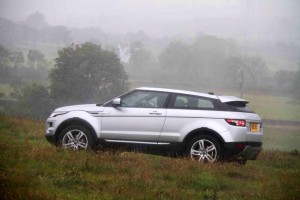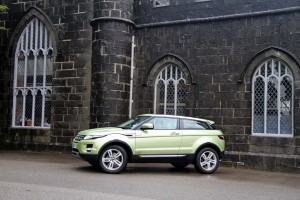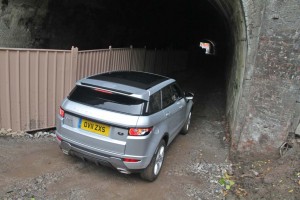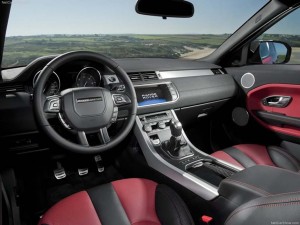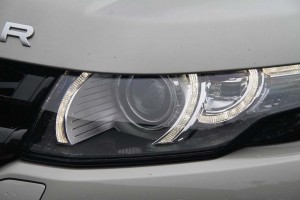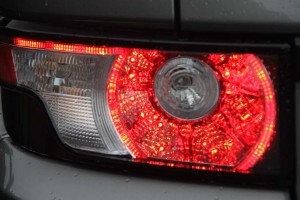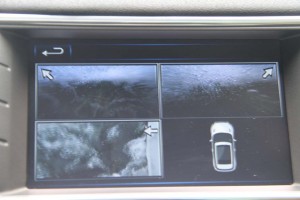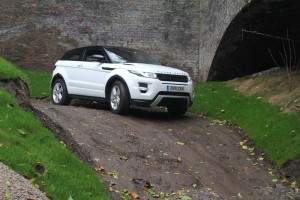Plenty of vehicles boast about their off-road capabilities. But how many will take you underground to back up those claims? And under Liverpool, no less?
But that’s precisely where we found ourselves in the new 2012 Range Rover Evoque, recently, cautiously piloting the maker’s new offering through a network of long-abandoned railroad tunnels deep beneath the old shipping town perhaps best known as the birthplace of the Beatles.
It was an unusual way to introduce a significant new offering from a brand that has traditionally defined the classic sport-utility vehicle. The 2012 Range Rover Evoque is the first major new product to emerge from the British marque since Land Rover – and sibling brand Jaguar – were sold to Indian automotive wannabe Tata Motors several years ago. It’s the newest model to share the top-line Range Rover badge. And, perhaps most notably, it’s Land Rover’s first crossover-utility vehicle.
That’s more than a subtle distinction. The 2012 Range Rover Evoque migrates to a car-like unibody platform, rather than Land Rover’s traditional body-on-frame truck chassis. It also adopts a funky, coupe-like design that styling chief Gerry McGovern confides will have a strong influence over the next generation of Land Rover products – whether truck or crossover.
The new model is both the smallest and, at just north of 3,500 pounds in base configuration, the lightest model ever to wear a Land Rover badge. That reflects the reality of today’s automotive market. Motorists are generally downsizing as they struggle to deal with crowded city streets and rising fuel prices. That doesn’t mean they want to give up style, performance, space or functionality, however.
And even though the typical SUV owner will seldom attack anything rougher than a gravel road – all the more true for those opting for high-lux models like a Range Rover – they are intent on maintaining a high degree of functionality.
During a long drive through Wales and England, we had the opportunity to drive a variety of different versions of the new Evoque, including both the 3- and 5-door models. What we quickly recognized is that the 2012 Range Rover Evoque is not just stylish but surprisingly roomy, well-appointed, quick and nimble. And while it may shave off some of the extreme off-road capabilities of a classic Range Rover, it’s still an enormously competent offering capable of taking on just about anything most drivers could conceive of.
Our drive began in Anglesey, an appropriate jumping-off point considering it is the spiritual home of the brand, the place where the very first Land Rover was sketched out nearly two-thirds of a century ago. Having passed through London on an atypically warm and sunny afternoon, the jump to Wales delivered a shock to the system, the wind blowing at near-gale force and driving a near-frozen rain into the face like pins.
Perfect weather for driving the new Evoque – and for understanding what led to the design of the original Land Rover. Our several days behind the wheel would ultimately give us a wide range of driving opportunities, on- and off-road, on narrow country lanes, M-route motorways, a deeply rutted trail following the path of a local water pipeline and then deep beneath the streets of Liverpool.
Everywhere we went, save perhaps for the tunnels, we found the new Range Rover Evoque drawing admiring stares. We’re seen a trend towards coupe-like designs in the sedan market – with luxury models such as the Mercedes-Benz CLS, Audi A7 and mainstream Volkswagen CC. The tapered roof-line of the Evoque might be considered coupe-like, as well, a term McGovern freely uses when describing the 3-door version.
It is the most visually stylish though we’d question the real benefits considering the challenges posed to those who might be relegated to the rear seats — roomy though they might be once you negotiated your way inside. With both 3- and 5-door offerings, there are sacrifices for style. Trying to get a vision of what’s behind you through the rearview mirror won’t reveal much due to the minimalist back glass. Meanwhile, the thick A-pillars also restrict forward visibility a bit.
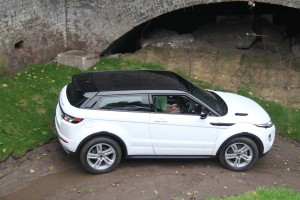
Cues from the distinctive, coupe-like design of the new Evoque will migrate throughout the British maker's line-up going forward.
So, what your eyes will likely focus on –especially if you’re a passenger – is a sumptuously outfitted interior that, despite the significantly lower price, clearly deserves a Range Rover, rather than more plebian Land Rover, badge. There’s plenty of plush, posh double-stitched leather and the requisite wood.
You also get a variety of today’s required technology features, including a large navi screen, an audio system you might want to take into your living room and a Bluetooth handsfree phone system. The navi screen will display images from the various cameras mounted around the Evoque, incidentally, and it’s quite a kick to see what it’s like as you plunge into a creek. The controls are, for the most part, intuitive and well-placed.
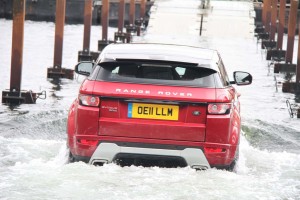
The Range Rover Evoque maintains far more off-road capabilities than most buyers will likely demand.
One thing traditional SUV buyers will likely appreciate is the apparent “command seating” position you get despite the fact that the Range Rover Evoque is a good four inches lower than the Land Rover LR-4.
Another feature found in the Evoque is the British marque’s Terrain Response Control, though here you have a strip that visually displays the mode you’re in rather than the rotary dial first introduced on the flagship Ranger Rover SUV.
For those not familiar with the system it takes the guesswork out of driving on different surfaces, such as mud-and-ruts, gravel, snow-and-ice or standard pavement. It does that by revising the settings of all manner of vehicle operations. In one of the off-road modes, the ride height increases several inches. Throttle response changes appropriately. In snow, you’ll start out in second gear. Transmission and brake-intervention systems like ABS and electronic stability control also are reprogrammed for optimum traction and handling.
It’s one way to make the most out of what you’ve got, and in the case of the Range Rover Evoque, that’s plenty to start with. We barely felt a moment’s hesitation whether on slick grass, deep ruts or when fording more than a foot of water. The obstacle course set up along the tunnel would’ve likely bogged down even some more conventional SUVs.
One big plus is the use of supplier Delphi’s Magneride suspension dampers. First offered on Corvette and Cadillacs, it uses a magnetorheological fluid, a technology that can adapt to changing road conditions or driver input in time measured by the thousandths of a second.
Pulling us through it all is a turbocharged 2.0-liter direct-injection inline-four – essentially the Land Rover take on the EcoBoost engine developed by former parent Ford Motor Co. It makes a reasonably peppy 240 horsepower and 251 lb-ft of torque which goes through a six-speed automatic and then a variable all-wheel-drive system. Unlike other Land Rover products, the Evoque features only a single-speed Haldex center differential.
While the I-4 is more than competent we’d have liked the option offered Europeans, who will get a 2.2-liter, 187 hp turbodiesel. Land Rover officials acknowledge giving serious consideration to a U.S. diesel, though when is one unanswered question, and it’s not clear it would be offered in the Evoque, anyway. More likely to follow is a hybrid system, senior executives told TheDetroitBureau.com.
(For more on Land Rover’s diesel and hybrid plans — as well as more on the next Defender — Click Here.)
The gas engine shouldn’t be dismissed, let us stress. It will get you to 60 in around 7 seconds and delivers a rated 19 mpg City, 28 Highway. While not exactly the numbers the White House is after as it pushes up federal fuel economy standards, that’s pretty good in the Evoque’s competitive set.
There are some nits to pick, and the new electric power-assist steering, or E-PAS, is quick but a bit numb. And you’ll find some of the classic complaints about Land Rover/Range Rover products in general. The brakes are powerful but feel a bit soft until your foot digs in. Even with the admittedly annoying lack of rear visibility, it’s hard to think of any deal-breaker.
And, for those who’ve always wanted to park a Range Rover in the drive, the price tag of $43,995 to $58,995 – a good 40% lower than the marque’s classic flagship – is hard to resist.
We’ll have to wait to see how the newest model in the British maker’s line-up fares on the quality charts. That’s been an ongoing struggle for Land Rover overall, though it has begun to make notable headway.
On the whole, then, we expect plenty of potential buyers to start eyeing the new Range Rover Evoque. It’s stylish, functional and just plain fun to drive. Whether you do your driving on-road, off-road or even underground, it’s worth a close look.

